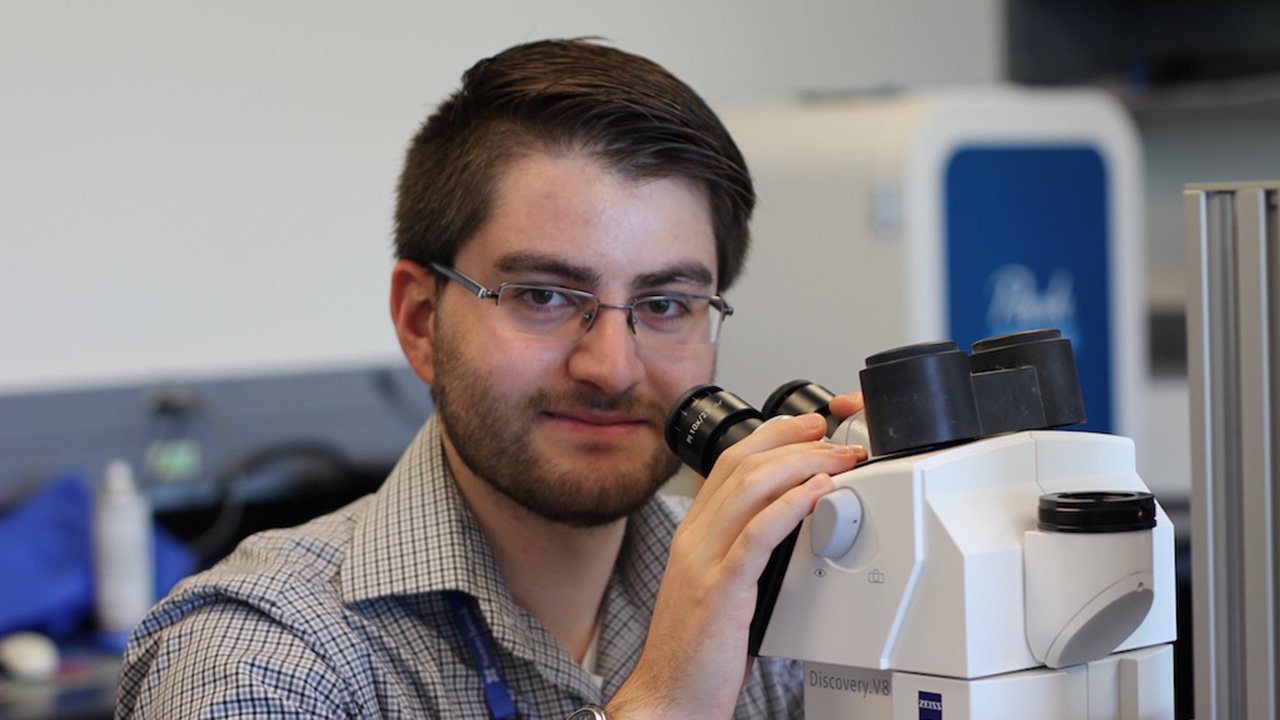A perfect preview
Zaid Atto fled his native Iraq in 2005 to escape the violence of the war that began with the invasion of Baghdad two years earlier. He was only 11 years old when he and his family relocated to neighbouring Syria, where they lived until 2009 before immigrating to Canada. Witnessing the devastation caused by the conflict had a formative impact, says Atto, a recent graduate of the engineering science program at the University of Toronto. “Growing up in a place where there’s a lot of death and destruction really inspired me to want to become the antithesis of that. I want to contribute to life, as opposed to war,” he says.
Atto, a summer student in the lab of Dr. Brian Courtney, a clinician-scientist at Sunnybrook Research Institute (SRI), is on his way to realizing his goal. Under Courtney’s guidance, he is developing a way of tracking a catheter from within a blood vessel in the heart. “What I’m trying to do is to be able to find the curvature of the vessels so that we can generate anatomically correct 3-D images,” he says. Building this capability into a tiny device is no easy feat. Yet Atto, who specialized in biomedical engineering during his degree, is up for the challenge—especially because getting it right would be of enormous benefit to interventional cardiologists like Courtney. In treating people with coronary artery disease, where the blood vessels supplying the heart become hardened and narrowed, Courtney uses catheters during angioplasty procedures to insert a balloon or stent to widen blocked arteries.
“It would help physicians in the [catheterization lab] to be able to properly assess plaque and vessel geometry, and identify particular landmarks in the vessel and heart anatomy. They can [then] pick the best stent or the best approach to use in that particular case, and support research into the effects of vessel curvature on plaque formation,” says Atto.
His work involves designing and fabricating precise components used to develop prototype catheters. He can be found using equipment in the device development lab that is part of SRI’s Centre for Research in Image-Guided Therapeutics. These include a dicing saw, used to cut micron-sized parts, microscopes and a 3-D printer. “The 3-D printers have been very important in developing some of the catheters I’m working on,” says Atto. “A lot of the parts have very intricate geometry, and it takes a lot more time and effort to machine those parts. It’s a lot more expensive to machine those parts than to 3-D print [them] and have it done in one day or overnight.”
Atto has seen first-hand why the work he’s doing matters. To get the clinical context for the lab’s research, he observed three angioplasty procedures performed by Courtney. He says the experience was “really profound” and gave him critical insight into the needs of the end users of the technologies he is helping to develop. “An engineer should think about what the physician, nurses and care teams are expecting from the technology: it must work. If it doesn’t, or only works half of the time, no one’s going to use it,” he says.
Courtney has engineered devices that provide imaging guidance during minimally invasive cardiovascular procedures. He’s commercialized them through Conavi Medical, a start-up company he co-founded.
Looking ahead, Atto says that he hopes to follow in his mentor’s footsteps. He’s gained an appreciation for the technical rigor and business acumen that are required in taking such a path. Atto acknowledges the massive investment of time and money needed to bring a technology to the medical marketplace, yet he remains undeterred. When asked why, he recalls an instance where Courtney was able to detect a clot in a patient’s heart with a catheter that uses optical coherence tomography to image the heart. The clot was not visible on X-ray angiography, a staple of cardiac cath labs.
“I am determined to make a difference, and I think it is rewarding once you see someone’s life has been saved. They now get a chance to live X amount of years—perhaps 10 or 20 more years because of this technology that has been developed. It is all worth it in the end.”
Zaid Atto received a D+H Summer Studentship Award.






